NASA's New ISS Experiment Will Study Mysterious Pulsars
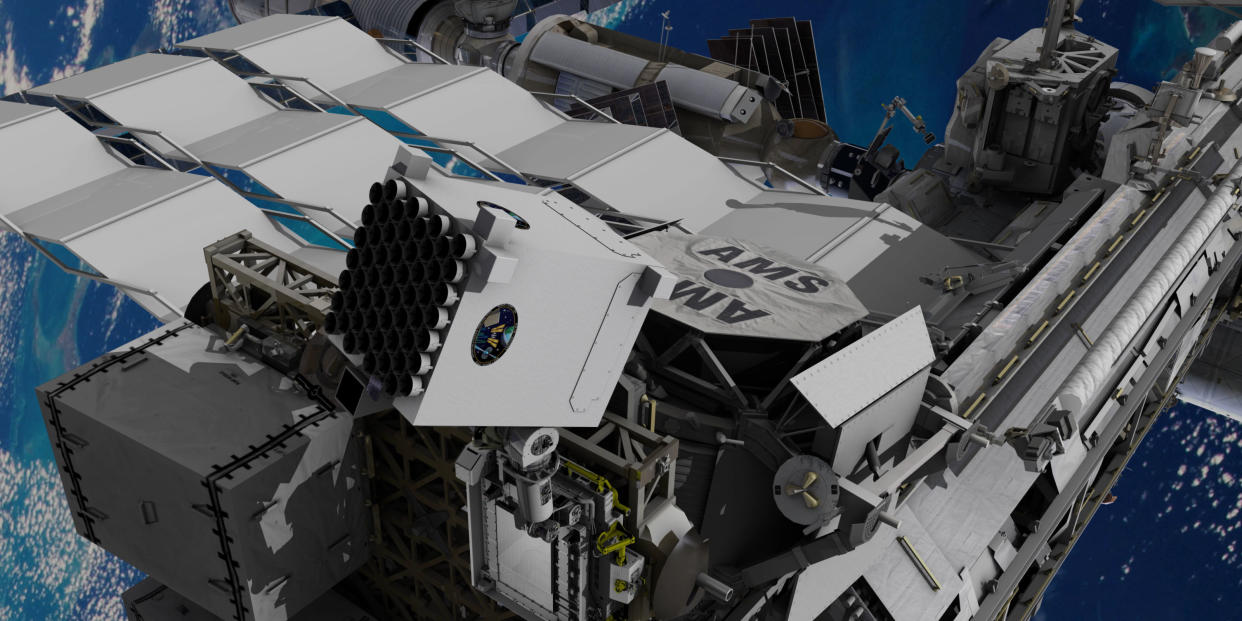
The first space-based experiment devoted to studying some of the most mysterious objects in the universe-neutron stars and pulsars-is about to launch to the International Space Station on Thursday, June 1, atop a SpaceX Falcon 9 rocket. NICER, the Neutron star Interior Composition Explorer, will be mounted externally on the ISS, and the X-ray spectrometer will tell us more about the gravitational, electromagnetic, and nuclear physics of neutron stars than we have ever known.
"Neutron stars represent a natural density limit for stable matter that you can't exceed without becoming a black hole," said NASA Goddard's Zaven Arzoumanian, NICER deputy principal investigator and science lead, in a press release. "We don't know what happens to matter near this maximum density."
Neutron stars form when stars between about seven and 20 times the mass of the sun end their lives in supernova explosions. When a star of that mass runs out of fuel to burn in nuclear fusion, it collapses rapidly due to gravity, compressing all its mass into a small volume at the center of the star until the core reaches a high enough density. At that point, the remaining material ricochets off the high-density core and is ejected out into space in a massive explosion. What remains is a neutron star-an ultra-dense ball of mostly neutrons that has up to twice the mass of our sun compressed into a sphere that is only 12 miles across, the size of a city.
A single teaspoon of material from a neutron star in Earth's gravity would weigh a billion tons. "If you took Mount Everest and squeezed it into something like a sugar cube, that's the kind of density we're talking about," said Keith Gendreau, principal investigator for NICER at NASA Goddard.
Using NICER, astrophysicists will be able to accurately observe the intense X-ray emissions that come from neutron stars. The X-rays from neutron stars do not penetrate Earth's atmosphere, so an instrument designed specifically to observe them from space will give us a better picture of these mysterious objects than ever before.
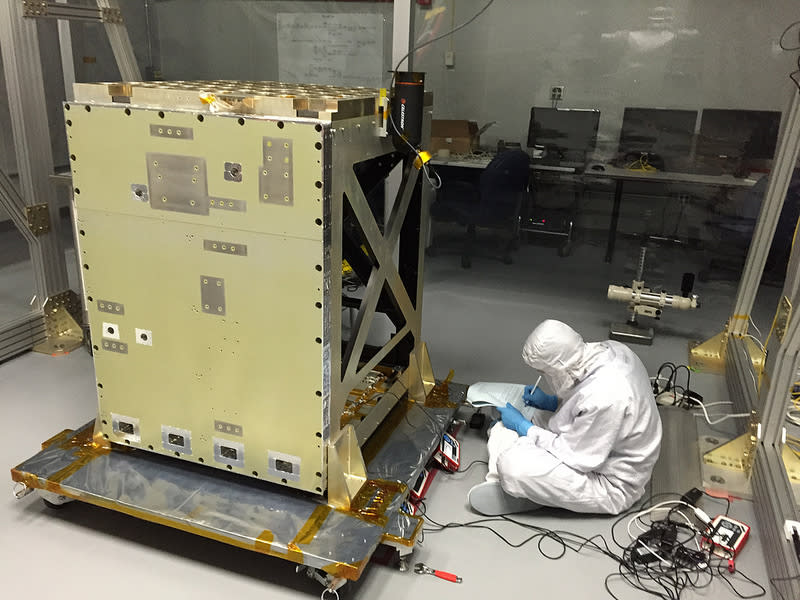
Neutron stars have the largest magnetic fields of any known object, up to 100 trillion times as powerful as Earth's magnetic field, and they are also the fastest spinning objects known. A neutron star hurls particles out into space at near the speed of light, and many of these particles follow the star's magnetic field lines back to the surface, bombarding the star at the magnetic poles. When particles moving at relativistic speeds collide with a neutron star, they heat up the surface and create so-called hot spots that emit incredibly bright beams of X-ray radiation.
If those X-ray beams shooting out into space happen to line up with the Earth as the star rotates, then we see the flash of X-rays as the star brightens and dims. We call these rapidly rotating neutron stars, pulsars.
"NICER is designed to see the X-ray emission from those hot spots," Arzoumanian said. "As the spots sweep toward us, we see more intensity as they move into our sightline and less as they move out, brightening and dimming hundreds of times each second."
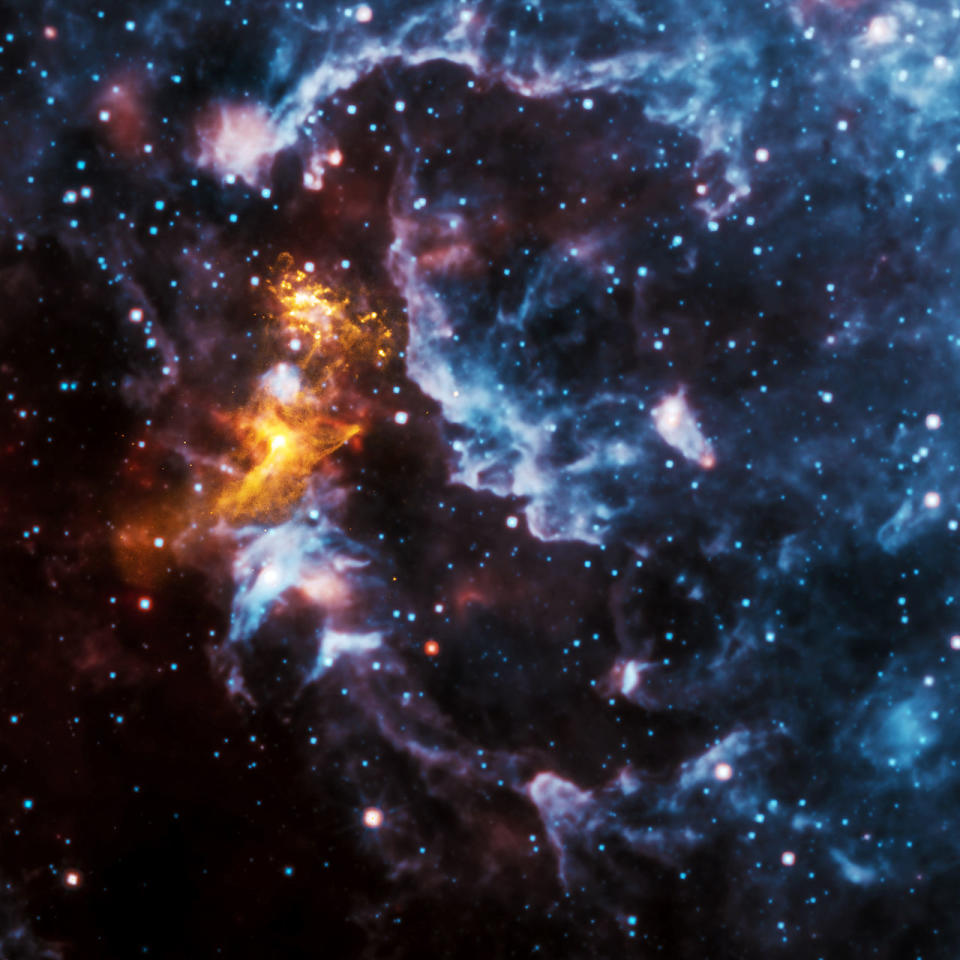
To help uncover how matter behaves inside a neutron star, NICER will be looking to determine the radius. Neutron stars and pulsars are so dense that they warp the fabric of spacetime around them, distorting our view and making them incredibly difficult to observe. By studying the brightness changes and using sophisticated computing algorithms to account for the distortion of the star, we can get a more accurate measurement of a pulsar's radius than ever before, and use that information to develop new theories about the interior structure.
"Once we have a measure of the mass and radius, we can tie those results directly into the nuclear physics of what goes on when you compress so much mass into such a small volume," Arzoumanian said.
Neutron stars are the densest objects in the known universe save for black holes, and as an additional scientific study, NICER will look to determine exactly what the tipping point is that causes a neutron star to collapse into a black hole. We know that when a star that is more than 20 times the mass of our sun supernovas, it leaves behind a black hole, but we cannot directly observe black holes because they are so dense that not even light can escape their borders, known as the event horizon. Studying neutron stars-particularly ones that orbit other stars, ripping away material and growing in mass-could help us learn more about their dark and mysterious black hole cousins.
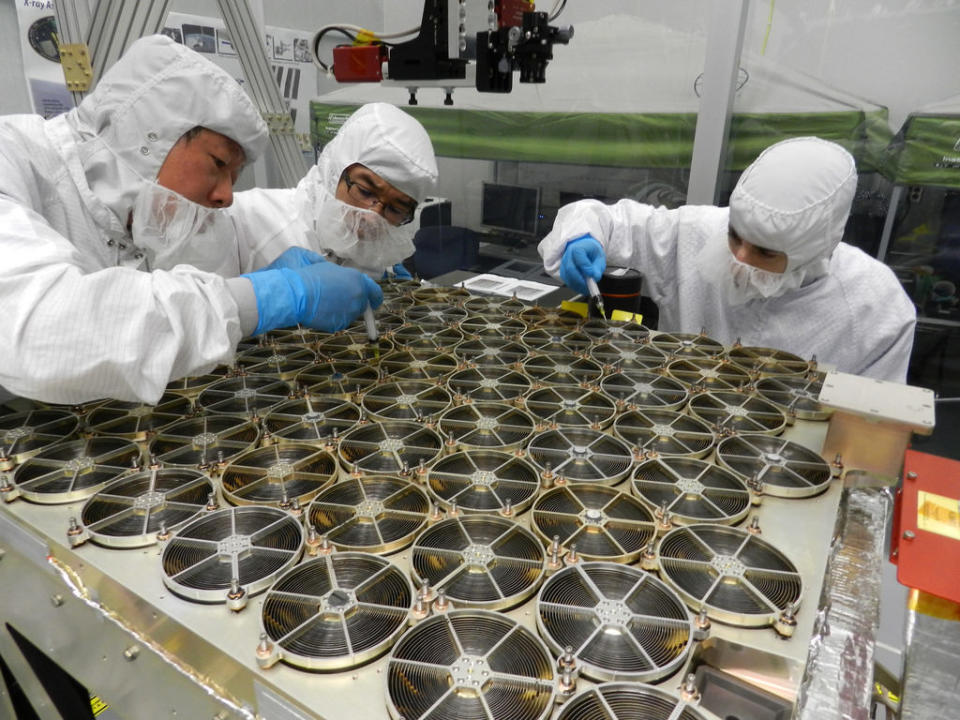
"The more neutron stars we observe at high masses, the higher the mass threshold becomes for a star turning into a black hole," said NICER science team member Alice Harding. "Understanding what that critical mass is will help us determine how many black holes and neutron stars there are in the universe."
NICER also includes an additional scientific instrument that will be used to study new ways to use pulsars as a means of space navigation. Arzoumanian compared pulsars to interstellar lighthouses in a conference held to discuss the upcoming NICER mission. "On long time scales over months and years, the accuracy of pulsars rivals or beats the atomic clocks we have here on Earth," he said.
The SEXTANT instrument-Station Explorer for X-ray Timing and Navigation Technology-will allow scientists to measure the precise timing of these pulsar bursts. Current satellites use GPS technology just like the navigational software that drivers use on the roads, but measuring the arrival time of X-ray pulses from a given neutron star as NICER travels through its orbit can provide an entirely new way to track the position of the spacecraft-in this case, the International Space Station. More importantly, it provides a way to accurately navigate spacecraft beyond Earth orbit, where GPS is not an option.
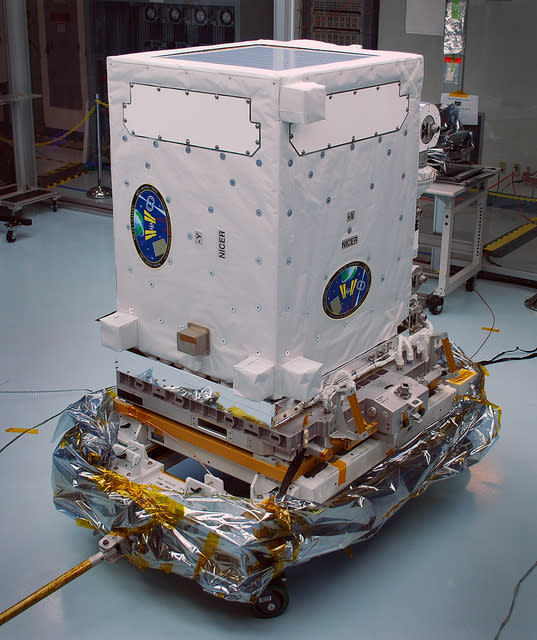
"Unlike GPS satellites, which just orbit around Earth, pulsars are distributed across our galaxy," said Jason Mitchell, the SEXTANT project manager. "So we can use them to form a GPS-like system that can support spacecraft navigation throughout the solar system, enabling deep-space exploration in the future."
In fact, when Carl Sagan and Frank Drake designed a pictorial message to launch on the first spacecraft that we knew would leave the solar system-Pioneer 10 and Pioneer 11-they provided the distance to Earth from 14 different pulsars, using the transition of a hydrogen atom to provide a unit of distance. If any scientifically advanced civilizations happen to find one of the Pioneer plaques, they could pinpoint the location of Earth using pulsars as reference points.
Our ambitions as a species continue to grow, and many influential space researchers openly talk about steps we could take to become an interplanetary civilization. When we finally set sail for deep space, it very well may be that pulsars light the way.
You Might Also Like
